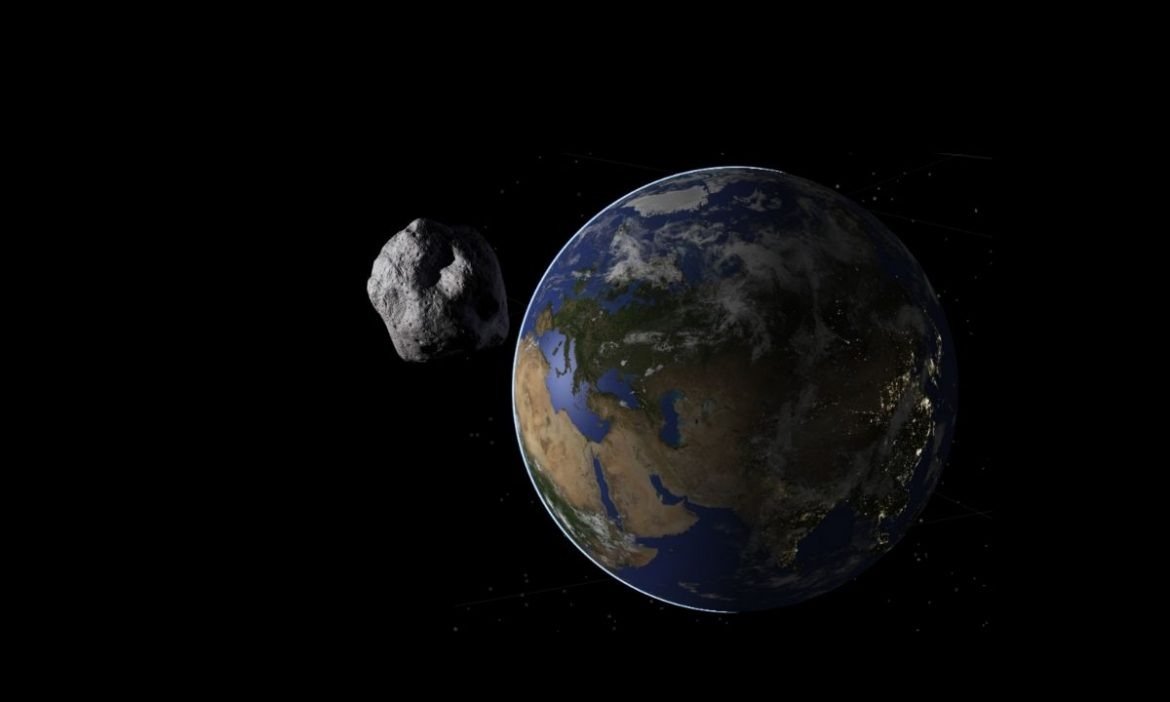Now, there are more than a million asteroids discovered to date (NASA Solar System Exploration, 2019), and more are found every day. They occasionally come close to our planet, and you may be worried about an impact risk. So, what if an asteroid hits Earth? The consequences might be better than you think!
First, How Many Asteroids Can Hit Earth?
Well, there are many, but most are small. There are 16,112 known asteroids that cross Earth’s orbit. (CNEOS, n.d.). Moreover, more than 2000 asteroids can come very close to Earth and can cause significant destruction on impact! (CNEOS, n.d.).
That may sound scary, but very few of these asteroids has a risk of impacting Earth. For example, the infamous asteroid 99942 Apophis was deemed harmless in March. However, there is at least one asteroid that have an impact risk with a diameter of more than 1 kilometer.
What Will Happen If an Asteroid Really Hits Earth?
In this scenario, most asteroids won’t even reach the ground in the collision because they burn up in the atmosphere. Asteroids with a diameter of less than 25 meters will likely burn up in the atmosphere unless it has a heat shield. (Jet Propulsion Laboratory, n.d.).

Image Credit: NASA’s Eyes, Canva
Then, why will small asteroids completely disappear even before reaching the ground? That’s due to friction. It’s the same principle as making you warm by rubbing your hands. Why wouldn’t your hand burn up? Well, it’s because asteroids move at kilometers per second, much faster than your hand can move. (Martin, 2015).
That extreme speed creates a lot of friction, which turns into heat, causing it to melt and vaporize. A meteor can reach well over 1500 Celsius when entering Earth’s atmosphere. (Kremer, 2015).
What If It Survives Atmospheric Entry?
If the asteroid is large enough or has enough protection, it might survive the reentry. Answering this question is probably the reason for you to read this article, so let’s get to the topic quickly.
Imagine that you slam on some sand on the beach. The sand will be blasted upward and quickly comes down, right? That’s the same principle that can cause mass extinctions by asteroids, but the impact force is at a much larger scale.
When an asteroid with a diameter of more than one kilometer hit our planet, it will kick up a lot of material. That material will cover the sky and let less sunlight through, causing an effect similar to a nuclear winter. In that case, the plants start to die, and the effect goes up the food chain, causing many species to become extinct.

Image Credit: Canva
However, smaller asteroids that reach the surface only cause local damage as the material they kick up doesn’t cause much global damage. The impact site will still be severely damaged or destroyed, as in the case of larger ones.
It May Be A Scientific Opportunity
If there’s a forecast that an asteroid is hitting Earth, it might just be a flyby if errors occur in the estimate. That way, both the asteroid and the potential impact site will not be destroyed.
If the asteroid passes by very close to Earth, it is a great opportunity of detailed observations of its surface, composition, physical properties, and orbit. Scientists can analyze the complex data, and there might be new insights about the formation of the Solar System thanks to a seemingly scary event.
What’s more, even if the object enters the atmosphere, it can create a magnificent meteor shower as it burns up in the atmosphere. Generally, there won’t be anything falling back to Earth if the main body has a diameter of less than 25 meters.
If you’re still scared, space agencies are developing plans to change the asteroid’s orbit so that it doesn’t hit our planet. For instance, the DART mission uses a kinetic impactor to change the target’s orbit by a small amount. Hopefully, this type of technology will be enough to prevent an impact if the force is strong enough in the right direction, along with other orbit-changing techniques. (NASA, 2020).

Image Credit: Canva, NASA’s Eyes
Conclusion
In this article, we discussed the consequences if an asteroid hits Earth. Remember that an asteroid flyby might not be an impact, and it provides excellent science opportunities.
If you want to know more about asteroids, you can do your own research online or visit the sites mentioned in the references.
References and Credits
- (2019, March 28). Overview | Asteroids – NASA Solar System Exploration. Retrieved April 3, 2021, from https://solarsystem.nasa.gov/asteroids-comets-and-meteors/asteroids/overview/
- (n.d.). Discovery Statistics. Retrieved April 3, 2021, from https://cneos.jpl.nasa.gov/stats/totals.html
- (n.d.). NEO Basics. Retrieved April 3, 2021, from https://cneos.jpl.nasa.gov/about/neo_groups.html
- (n.d.). Fast Facts. Retrieved April 4, 2021, from https://www.jpl.nasa.gov/asteroid-watch/fast-facts
- Ann Martin. (2015, July 18). Why don’t skydivers burn up like meteors? (Beginner). Retrieved April 4, 2021, from http://curious.astro.cornell.edu/our-solar-system/73-our-solar-system/comets-meteors-and-asteroids/meteors/305-why-don-t-skydivers-burn-up-like-meteors-beginner
- Ken Kremer. (2015, December 1). Orion gets beefed up, silver-metallic thermal protection coating for next flight on EM-1. Retrieved April 4, 2021, from https://phys.org/news/2015-12-orion-beefed-silver-metallic-thermal-coating.html
- (2020, June 30). Double Asteroid Redirection Test (DART) Mission | NASA. Retrieved April 4, 2021, from https://www.nasa.gov/planetarydefense/dart
- (2020, April 29). Asteroid 1998 OR2 to Safely Fly Past Earth This Week | NASA. Retrieved April 4, 2021, from https://www.nasa.gov/feature/jpl/asteroid-1998-or2-to-safely-fly-past-earth-this-week

